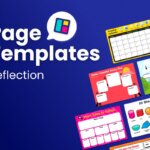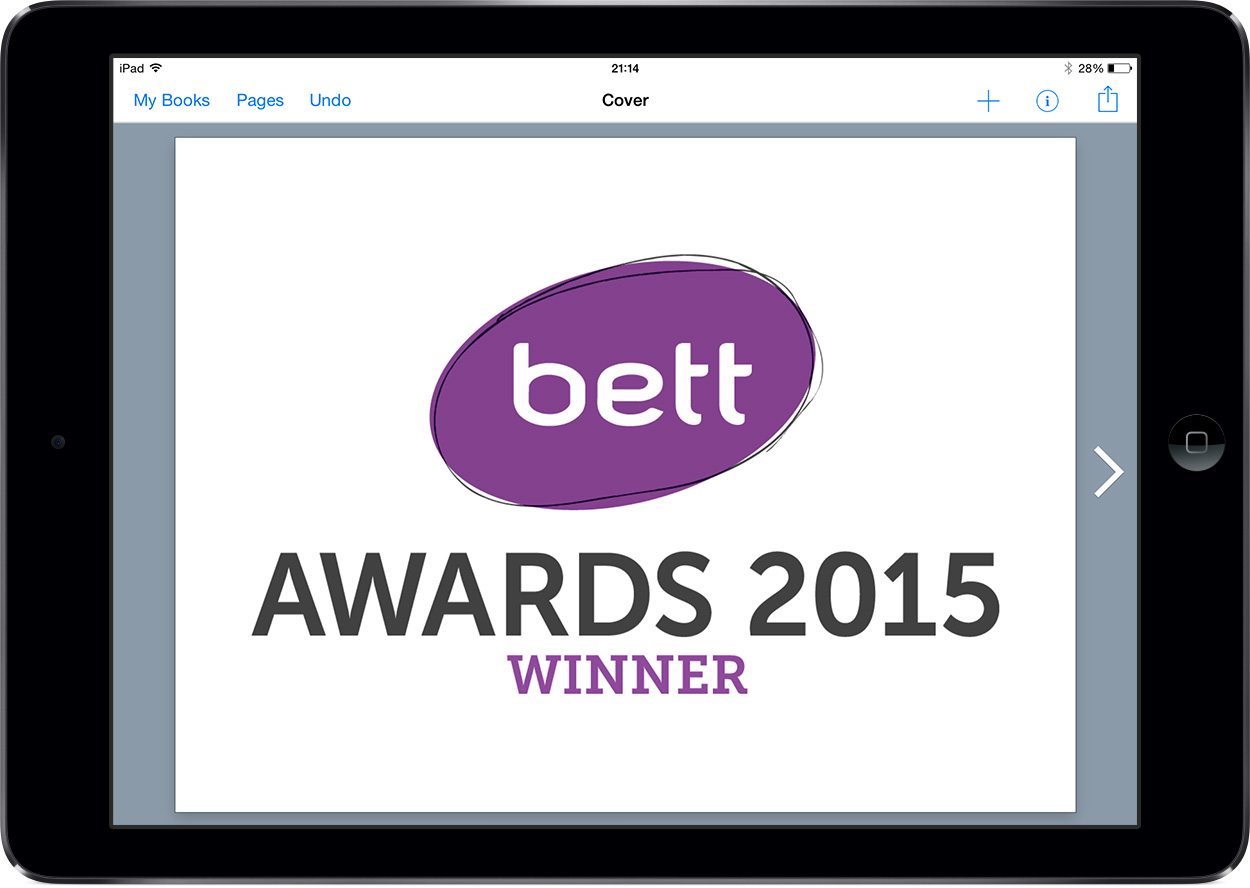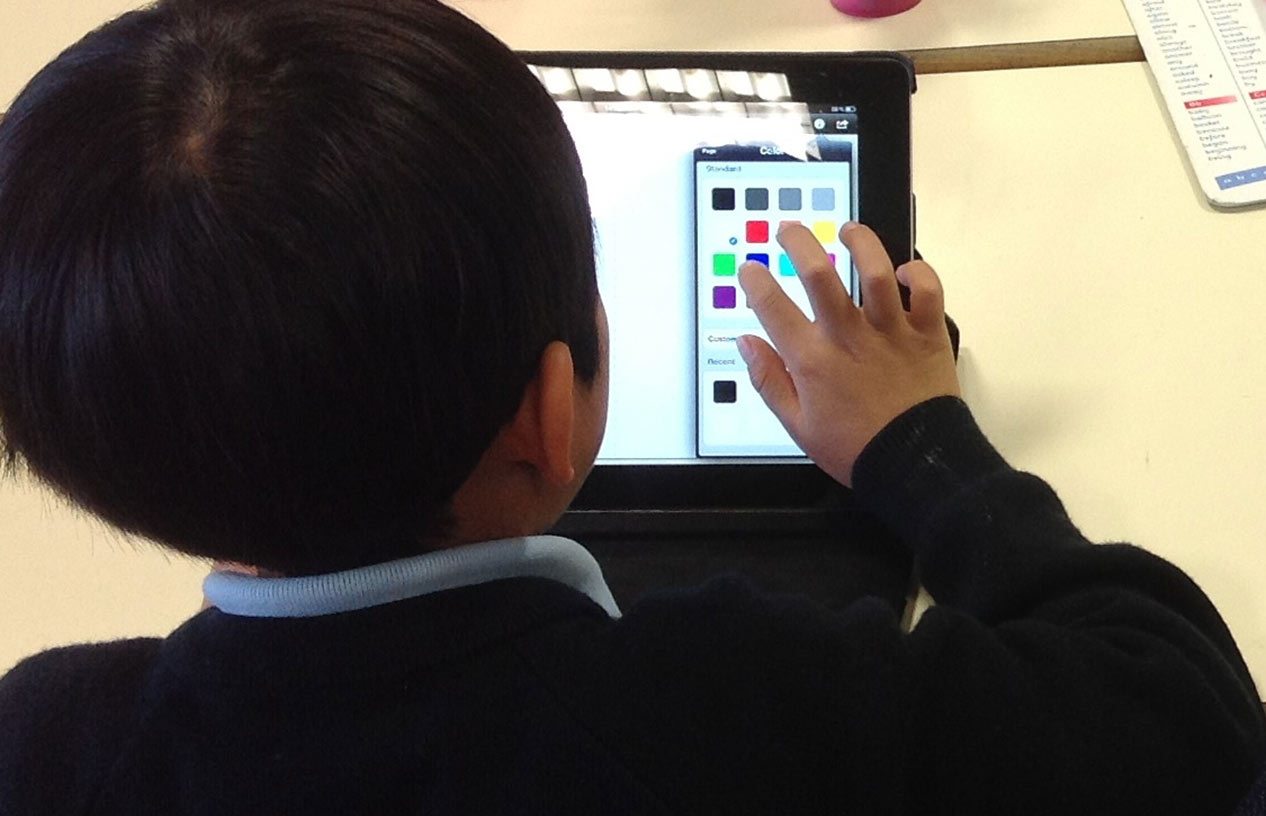
In today's digital age, where it is commonplace for classrooms to function in a 1:1 environment, educational technology plays a pivotal role in transforming student learning experiences. Whereas educational technology used to exist as an event where students would have access to the creative potential of computers in isolated instances in a computer lab, the landscape has changed.
With the rapid emergence of 1:1 classrooms, school leaders need to be thoughtful in selecting educational technology that will have a meaningful impact. Keeping up with the pace and emergence of educational technology can often feel daunting. However, selecting the right educational technology tools can be a complex process for school districts.
In this comprehensive guide, we will explore the key considerations and steps involved in choosing educational technology that holds the potential to transform the student experience and unlock new creative opportunities for student voice.
Defining edtech goals: a strategic approach
Before embarking on the journey of selecting and implementing any new educational technology, it is essential to define clear goals and objectives.
Educational technology should not merely be a checkbox item but a means to provide new opportunities for students to express their unique thinking. Look for platforms that support various modes of communication, allowing students to share their ideas through text, images, audio, and video.
To develop a clear purpose within a school, district or technology department, school leaders can identify the skills and abilities that they value and work backwards to align any new educational technology with those skills.
Often the device, platform, or app drives the decision making process and determines the type of work students will engage with and what classroom use looks like. If school leaders begin with verbs, the action or intentional use they want to see both educators and students taking, they can then work backwards to the nouns, or the technology, apps and platforms that support their purpose and vision.
Using “How Might We” statements to drive purposeful edtech integration
School leaders can use a helpful strategy to craft a meaningful purpose, vision, and intention for using educational technology: the framework of “how might we” statements. This framework emphasizes purpose over the platform and allows school leaders to establish a common language and vision.
How Might We framework for edtech integration:
How Might We: [State the purpose or intention clearly] For: [Specify the grade level, school, or district] With: [Name the educational technology or tool being used] Because: [Explain the reasoning, including the purpose and the belief behind it]
How Might We example:
How Might We: inspire and nurture creative expression
For: elementary students
With: Book Creator
Because: creative expression is a vital skill that empowers students to explore their ideas, build confidence, and engage in meaningful, hands-on learning experiences that integrate creativity into every aspect of their work.
Identifying edtech needs across classrooms and districts
In our pursuit of the meaningful and impactful use of educational technology, school leaders are attempting to weave together diverse voices, comfort levels, readiness, and experiences across all classrooms in a school or district.
Traditionally, educators land on a wide spectrum of needs and comfort levels, which can significantly impact the ability to identify a single need with a single instance of educational technology.
With a district “How Might We” statement in place, the intention or top line of the “How Might We” statement can effectively be interpreted in multiple ways across grade levels, schools, and content areas. Whereas a district may be looking to embrace and foster creativity, the need for creativity and the tools to support it may differ across an entire district or even school.
Imagine a classroom where students yearn for innovative avenues to express their thoughts and ideas, and teachers seek tools to invigorate their instructional practices and deepen student engagement.
Through attentive listening and open dialogue, we discover the pain points that hinder student progress and uncover the untapped possibilities that await exploration.
This engaging and reflective exploration of our learning community sets the stage for transformative change.
Whereas decisions around the implementation of educational technology are often driven by a few decision-making voices, we should look to operate from the collective wisdom of our educators and students, who can then champion the integration of educational technology that aligns with our “how might we” statement vision and aspirations.
By capturing the unique dreams, concerns, and aspirations of our educational community, we can identify educational technology that supports both the capacity of the educator and learner and aligns with the intention of district leadership.
Evaluating the impact of educational technology on learning
Measuring the impact of educational technology can be challenging. It goes beyond tracking login statistics and files created. True impact lies in its influence on teachers' instructional practices and students' outcomes.
Whereas data can be helpful in decision-making, ultimately, school leaders should look to take an approach of measuring impact through two lenses.
From one perspective, focus on evaluating the quality of student work and the extent to which the technology enables them to engage in creative expression and critical thinking. By visiting classrooms, we can often get a first-hand account of how the design of student experiences has shifted and is now providing new opportunities for learners to creatively express their understanding.
Pair that first-hand observation with data that is often accessible via login metrics as a second lens to paint a clear picture of the overall impact on the student experience.
Ultimately, measuring impact has to be defined by the richness of the work that students are able to create and how that work aligns with the intentional use of educational technology outlined by the district.
Ensuring student data privacy in edtech implementation
Student data privacy is of utmost importance when selecting educational technology tools.
Take the time to thoroughly review the terms of service and student data privacy agreements provided by the vendors. In some cases, you may leverage the expertise of organizations that vet these policies, helping alleviate the burden on individual school districts.
States and regions often have collective organizations that will extensively vet the terms of service and student data privacy agreements to take the burden off of smaller districts that may not have the resources dedicated to this task. These organizations can be exceptionally helpful when making decisions around implementing new educational technology.
At the district or school level, it can be valuable to establish a database or toolkit of district-approved technologies and platforms that educators can use that align with the district’s student data privacy standards.
Balancing top-down vs. bottom-up edtech decisions
The ideal scenario would be for all educators to have the time and capacity to investigate, experiment, and evaluate a wide spectrum of education technologies.
Often, the reality is quite different, and decision-making has to play out in a top-down fashion. However, consider both bottom-up and top-down decision-making approaches when selecting educational technology. While top-down decisions driven by district leadership are common, it is vital to incorporate the voice and feedback of classroom teachers and students. Establish an Educational Technology advisory committee with representatives from various stakeholders to ensure diverse perspectives and meaningful collaboration.
Also, creating small pockets of use across a school or grade level that is driven by the interest of a singular classroom can be an exceptionally powerful approach. Often, a classroom teacher can integrate a new bit of technology at little to no expense, and this small-scale implementation can provide insight into the ability to both scale use and measure meaningful impact.
Simplifying edtech onboarding
Onboarding can traditionally be an overwhelming process. Thankfully, the days of manually rostering educational technology tools and platforms do not have to exist. Consider simplifying the onboarding process for students and teachers by leveraging technology.
Platforms like Clever can streamline the rostering of students, particularly for larger-scale implementations. For smaller-scale or pilot implementations, teachers can manually create classes and roster students.
In a large-scale implementation, simply rostering students and providing the path for a single sign-on experience will likely not guarantee a meaningful impact. Pair a full-scale rostering with a staggered rollout of communication across a district.
One helpful path in designing the communication and messaging of a new platform can look like this:
- Introductory email to district educators
- School Faculty Meeting: Live Demonstration
- Professional Learning Opportunity: In-person or video-based
- Early Adopters: Visit classrooms with early adoption to observe, troubleshoot, or even co-plan!
Budgeting for edrech: cost vs. impact
Budgeting for educational technology requires careful consideration of cost versus impact. EdTech tools are often priced based on the number of seats required, with larger numbers reducing overall costs.
However, it may take up to three years to fully evaluate the value a technology tool adds. It’s essential to map out the costs over this period to give teachers enough time to experiment, explore, implement, and evaluate the tool's impact on student learning.
By the end of this three-year window, district leaders should have gathered both hard data from the tool or platform and anecdotal evidence from classroom experiences. This combined insight will enable them to make an informed decision regarding the tool’s sustained future use.
Big picture: making informed edtech decisions for schools
Selecting educational technology is a multifaceted process that requires a deep understanding of purpose, impact, privacy, and the needs of teachers and students.
By defining clear goals, involving multiple educator and student voices, measuring impact effectively, ensuring student data privacy, fostering collaboration, streamlining onboarding, and budgeting thoughtfully, school districts can make informed decisions that positively impact student learning experiences.
Let us embrace the transformative power of educational technology and provide our students with the tools they need to thrive in an increasingly digital world.
Stay tuned for the next post
Now that we’ve explored the key considerations for selecting educational technology, the next step is implementation—and that's where challenges often arise. In next month’s post, we’ll dive into how to effectively roll out educational technology by tackling common roadblocks such as onboarding, balancing teacher autonomy with a unified approach, and aligning tech with student skills.

Get Book Creator for your school!
- Upgraded accounts for all your teachers
- Implementation plan to help with rollout
- PD support
- Analytics & admin dashboard
With two decades of experience in education, Greg Kulowiec brings a dynamic blend of expertise as a former high school history teacher, Director of Technology, and professional learning provider. Greg has presented at major conferences, including Google’s Global Education Summit, ISTE, and NCSS. Currently, he serves as the Director of Technology at Triton Regional School District and Lead Learner at the Kulowiec Group. He resides in Newburyport, MA, with his wife and two children.










